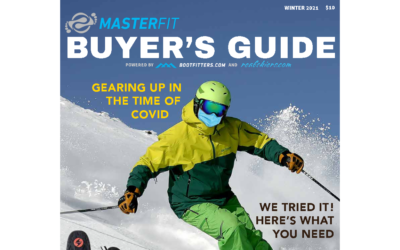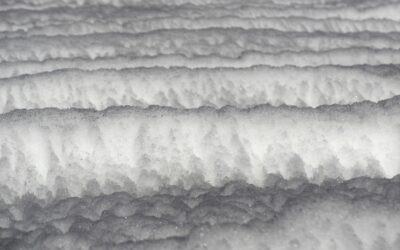
As I’ve been telling you since I first ascending this pulpit, there is nothing you can do to help your skiing more than procuring a properly fit ski boot. There is no way to compensate for its absence, no alternative that makes the choice of boot immaterial. It is, in a word, essential.
Given the primordial importance of the bootfitting enterprise, I thought it might be instructive if you, Dear Reader, experienced a typical bootfitting interaction from the bootfitter’s point of view. Let’s suppose introductions are over and you’re now seated before me, eager to get the process underway.
Before I even ask you to show me your bare feet, I’ve been observing your stance and seated posture. I’m trying to gauge, in general, how much of an athlete I have in front of me. Some people glide through the world; others, shall we say, don’t. It’s too early to form judgments, of course, but information gathering starts at, “Hi, my name’s Jackson.”
I’m going to ask to see your bare feet and to take a look at whatever you brought as a ski sock. The sock will get an immediate verdict, yes, these will be fine, or no, let me get you something that will make a happy outcome more likely. Your bare feet will usually require a little re-positioning, as I want them hip-width apart, right angle at the knee and hip, feet aimed at me.
While I’m guiding your bare tootsies into a neutral position, I’m feeling for any abnormalities and asking questions like, “Any history of injury I should know about? Any areas that always give you trouble?” I’m scanning typical problem areas for telltale signs of issues I’ll have to deal with no matter what boot I target.
I’m going to measure the length of both your feet, and usually the heel-instep perimeter (HIP). Other interesting measurements – notably arch length and width – I don’t need to measure as the evidence is staring me in the face. What I can’t tell just by eyeballing are the flexibility of your arch and your ankle range of motion, so I’ll conduct a couple of 5-second tests to see how healthy and receptive to support your arches are and if your ankle ROM is compromised.
As I scan your foot and lower leg, I’m looking at how each element – calf, ankle, heel, midfoot and forefoot – looks relative to the whole. For example, if am I looking at a big piston of a calf mounted on a slender lower leg and ankle, with a high arch, how am I going to fit this amalgam? What oddity do I prioritize?
The answer is always, prioritize the bones of the rear foot. In this case, I’m going to need a low-volume shell, even though the calf and midfoot are screaming for something, anything, larger. Why do I go this route? Because the hardest part of the boot to modify is the heavily reinforced heel and ankle area, so I want the ideal match of skier and boot to be in this zone. The calf pinch I can deal with by raising the heel a tad, which will annoy the arch until I expand that area, which is easy to do, much simpler than trying to carve out new territory in the heel.
Now I’m ready to hear your skiing history, where you’ve been, where you dream of going, what runs you seek out, what you wouldn’t ski on a bet. I’m always interested in your current boots and why they’ve fallen out of favor. Is there anything in particular you want to try on, because of a friend’s recommendation or a previous, positive experience? Left to my own devices, I won’t be making a lot of trips to the stock room, so if you have a model in mind, now is the time to mention it.
A good bootfitter doesn’t just know about feet and how they behave in the hostile environment of ski boots; he or she also needs to know the strengths and weaknesses of every model in inventory. It’s the ideal marriage of boots and feet that we’re trying to consummate; the more one knows about both, the better the probable outcome.
Before I put you in the first model and size I’ve selected for you to try on, I want to revisit your arch. No matter what boot I retrieve, the insole that comes with it will be a nothing-burger, a mere placeholder for a device that actually does something. That “something” is full contact with the zillions of proprioceptors in your arch, a key component in your balance system that beg to be connected, and need support to do their job. While off-the-rack solutions can’t usually achieve the perfect match that’s attainable in a custom insole, even an approximate fit is better than the nothing-burger.
At this point, I know a lot about what boot I’m leaning towards, but there’s still one critical factor I can’t predict: your ability to flex a ski boot. Every model has a designated flex index; the higher the number, the stiffer the boot. In most cases, you want the stiffest boot you can comfortably flex forward while standing on the boot bench. The first boot I present may not be the stiffest option available, but I will be shooting for the highest flex I suspect the customer can manage.
Boot pricing is directly correlated to flex: the higher the flex number, the higher the price. Usually, each 10-point jump on the flex index triggers a $100 bump at retail. The best advice being proffered in today’s Revelation is: DO NOT GET A SOFTER BOOT JUST TO SAVE $100. The boots you buy today may be with you for the next decade. If you want to improve as a skier over that span – no matter what form said improvement may take – a closer-fitting, more supportive and more responsive boot will make it possible. The C-note you spend to get the better boot is a pittance over the lifespan of the boots and a paltry fraction of the total cost of one’s equipment, not to mention lift passes, lodging, transportation… You get the idea.
Once I have you in the right boot, in the right flex and you have solid underfoot support, we’re done. Almost. I want to see you flex the boot and rock side to side. I’m looking for stance and alignment issues that could limit your performance and/or comfort. Based on what I see, I may elect to slightly shift your ramp angle or modify your lateral cuff alignment.
That’s it. There are always other accoutrements to consider, such as a heated boot bag, a Booster strap or a custom inner boot, but job one is done and dusted. Shall we look at skis?
Related Articles
The Making of a Skier, Part IX: The ASTM, Carl Ettlinger and I
One of the many hats I wore as North American binding product manager for Salomon in the early 1980’s was that of delegate to the American Society for Testing and Materials (ASTM). I believe the first meeting of F8.14 – the sub-committee on ski safety – that I attended was in Pennsylvania. I was flying under the wings of Salomon’s seer of all standards and patents, Gilbert Delouche, and the binding product manager for the North American zone at that time (and my mentor), Joe Campisi.
I was a babe in the woods, but I soon caught on to the game under Delouche’s patience guidance. I recall a debate on the binding specification then being batted around in the technical committee chaired by Carl Ettlinger. Ettlinger wanted language that would require any release/retention setting of 10 or above to be “visually distinctive” from the rest of the scale.
Why This Buyer’s Guide?
Don’t read the 2021 Masterfit Buyer’s Guide in Partnership with Realskiers.com for its 62 ski reviews. I should know. I wrote or edited all of them.
Not that the ski reviews aren’t worth the read. But ski reviews on the web are as common as rice, while the Buyer’s Guide contains something no other publication, whether in digital, print or video format, can claim: the most respected, thorough and dependable boot reviews in the world.
This isn’t mere puffery. The Masterfit Boot Test is so well regarded by the supplier community that nearly every brand not only sends its following year’s line-up in four men’s sizes plus three for women, it also dispatches its top designers and/or product managers to a distant North American site for most of the test’s five-day duration.
The Ripple Effect
As I’ve observed in this space before, product managers spend most of their time in the future; the present for them is two years away for the rest of us. So when the coronavirus shut down the 19/20 ski season, it triggered an automatic response in the R&D lobes lodged deep in my noggin: what impact will this have two years down the road?
If I knew the answer to this question with any certainty, I should be running a hedge fund, not scribbling about skiing. But after checking with several of the bellwether players in U.S. market, I have some idea of what’s in store.





